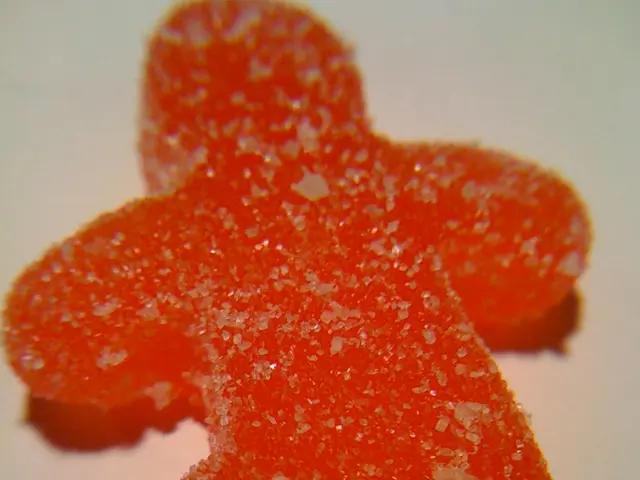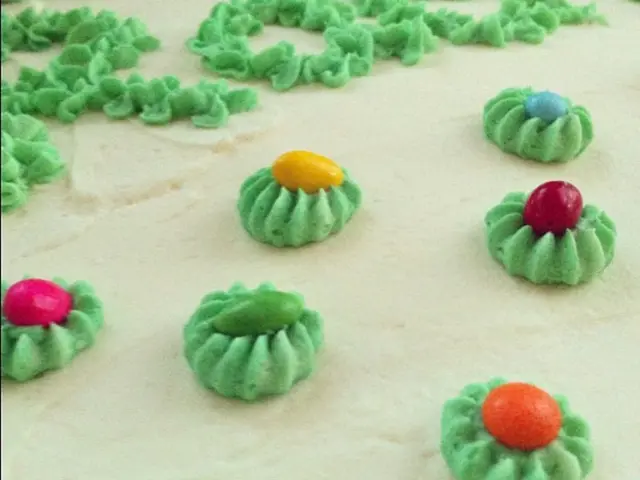Rapid and Severe Rosacea: Causes, Manifestations, and Remedies
Unleashing the Beast: Rosacea Fulminans Decoded
Rosacea Fulminans is an aggressive, inflammatory skin condition that catches its victims off-guard. It primarily targets the central facial areas, including the chin, cheeks, and nose, exhibiting as flushed, swollen, and excruciating bumps that tend to merge.
This condition, also known as pyoderma faciale, shares some similarities with rosacea and acne, but the symptoms are more intense and sudden in onset. Rosacea Fulminans shows a preference for affecting females of childbearing age, but the underlying cause remains a mystery.
As a rare and elusive condition, the exact causes of Rosacea Fulminans are not well-defined. However, some compelling theories suggest links to inflammatory bowel disease and pregnancy. People with a previous form of rosacea may also be at a higher risk of developing this aggressive variation.
Stress, hormonal fluctuations, and certain medications are suspected triggers for Rosacea Fulminans. Recent studies reveal that dietary factors may also contribute to triggering or worsening symptoms, although the evidence is not specific to Rosacea Fulminans.
Potential dietary triggers include:
- spicy foods
- alcohol
- food items containing cinnamaldehyde, such as chocolate, tomatoes, and citrus fruits
- histamine-rich foods and beverages like wine, aged cheese, and processed meats
- hot drinks
It's worth noting that dietary triggers may significantly vary from person to person, making generalized dietary recommendations unwise.
Symptoms of Rosacea Fulminans primarily focus on the forehead, nose, cheeks, and chin. Redness, inflammation, painful pustules, papules, and nodules are common, accompanied by flushing and stinging sensations. In some cases, eye irritation and light sensitivity may occur, while systemic symptoms like fever and fatigue are rare.
Treatment options for Rosacea Fulminans generally involve oral isotretinoin and corticosteroids, with some people also benefiting from stress management and dietary modifications. Antibiotics combined with corticosteroids and lifestyle changes have proven effective in certain case studies. Identifying and avoiding triggers may also prove beneficial.
If you're experiencing symptoms that go beyond typical rosacea or acne, such as large, tender nodules, abscesses, or significant facial discomfort, it's crucial to consult a dermatologist or healthcare professional. Prompt treatment can help manage symptoms more effectively and prevent potential complications like scarring and infections.
In summary, Rosacea Fulminans is a fierce and enigmatic form of facial eruption, primarily affecting adult women. The exact causes remain shrouded in mystery, although stress, hormonal fluctuations, certain medications, and dietary factors are suspected triggers. Treatment options can include corticosteroids, isotretinoin, stress management, and dietary adjustments. Don't hesitate to seek medical attention if you suspect you might be dealing with Rosacea Fulminans.
- Rosacea Fulminans, a fierce skin condition, is often linked to chronic diseases like inflammatory bowel disease and pregnancy.
- People with a history of rosacea may be at a higher risk of developing this chronic medical condition, Rosacea Fulminans.
- In addition to stress and hormonal fluctuations, certain dietary factors such as spicy foods, alcohol, food items containing cinnamaldehyde, histamine-rich foods, hot drinks, and others may trigger or worsen symptoms of Rosacea Fulminans.
- Health and wellness practices, including skin care, stress management, and dietary adjustments, can potentially aid in managing symptoms of Rosacea Fulminans alongside medication treatments like oral isotretinoin and corticosteroids.








